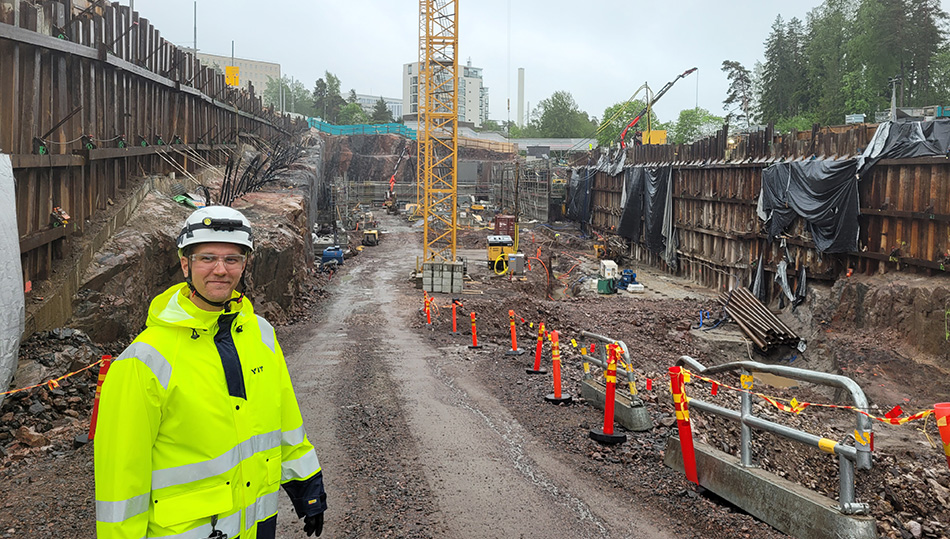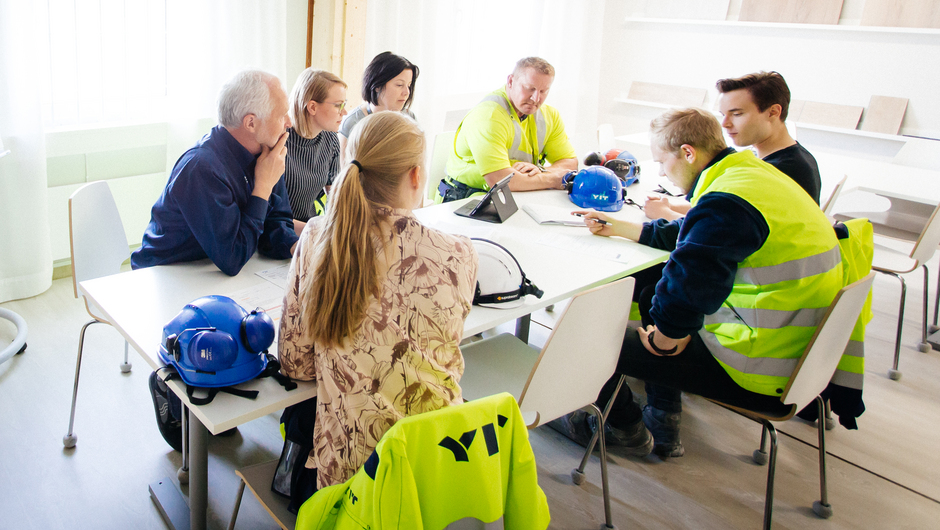Sustainable data centers as a service
- Construction
- Premises
- 6/7/2022
Takt time production improves quality, saves time and helps the environment
YIT is using takt time production in an increasing number of construction projects, bringing a variety of benefits to customers. The revolutionary working method shortens lead times and improves quality.

The building trade is always looking for solutions that improve productivity and bring benefits to customers, and takt time production is one such operating model.
“This is a revolutionary production model”, says YIT Development Manager Jami-Petteri Ahonen.
Ahonen knows the topic well. His duty is to promote the implementation of takt time production in YIT construction projects and to support sites by training workers.
“It is fulfilling to work with a topic that is interesting and reforms the field.”
A systematic working method
Takt time production in construction has been compared to the automotive industry’s conveyor belt, where the production process proceeds at a steady speed, and each work phase is completed within a planned timeframe.
In takt time production, the tasks at a site are organised into packages that can be completed within a certain takt area in a certain takt time.
“As an example, the takt area of interior work can consist of one floor, where one package can include making the frame and boarding one side of partition walls. Another package might be electric wiring, while a third is covering the partition wall”, Ahonen illustrates.
At YIT, one takt time unit is usually one workweek. The team begins working on a new package on Monday and completes it on Friday.
“It is much easier to monitor the progress of work that has been clearly divided into sections. This way, foremen have even better control over the project.”
Careful planning and design
Takt time production emphasises careful, thorough planning. When the work packages and schedule are being planned, it is important to ensure that workloads are appropriate.
“The goal is not to run faster or to increase the pace of any single worker. The efficiency lies in the fact that we plan and carry out projects more smartly. This also improves quality."
Takt time production planning utilises the data and Building Information Models produced in construction planning. Discussions with partners are also important to ensure that the work is planned according to the available resources.
We also work closely with the client to ensure that the progression plan meets the client’s needs and project objectives.
“Cooperation is about more than meeting traditional expectations”, says Ahonen.
Takt time production is also becoming more common in commercial property construction
YIT started takt time production with multistorey car parks and residential construction. After good experiences, the production model is now being implemented in commercial property construction.
“In residential construction, implementing takt time production is made easier by the fact that the team can repeat the same tasks on similar floors.”
With commercial property construction, varied solutions for premises present a challenge, but Ahonen says that good planning can make takt time production viable for these projects as well.
One such project that YIT has experience with is the new building project for Vaasa Central Hospital, and the lessons learned from the project will be used in the interior construction of the Helsinki University Hospital’s new eye hospital, Oak Hospital. The lessons will also be applied to the business premises in Tuultenristi, a commercial property in Espoo.

Takt times based on earlier projects
According to Ahonen, one lesson learned about commercial property construction is that the installation work of technical building systems should be closely aligned with other work to ensure that heating, ventilation, air conditioning and electricity work progress at an equal pace.
Experience has also helped in defining the best size for takt time units.
“Projects should not be divided into pieces that are too small. We have concluded that the best size for a single takt time unit is five days. This makes work more systematic and also makes it easier to fit tasks into the rhythm of a workweek.”
Fast lead times a key benefit for customers
Takt time production brings a variety of benefits to customers. In Ahonen’s opinion, the key benefit is that construction lead times are clearly shorter.
“The project can be handed over with a much faster schedule. This way, you can start gaining revenue from the property faster, and residents can move to their new homes earlier.”
Takt time production saves time when all packages are planned to work at the same pace. It reduces gaps in work at sites.
“In traditional construction, you have to leave buffers between different work phases. When one team finishes their work in one area in takt time production, the people working on the next package can get right to work the following Monday.”
Takt time production requires more careful planning, so buffers become more visible, and their use can be planned better. This allows for lead times to be shortened and production to become more efficient.

Takt time production brings environmental benefits
In addition to more systematic and high-quality construction, Ahonen emphasises the environmental benefits of takt time production.
A clearly defined package provides an opportunity to make sure that the need for materials is measured more accurately. When working on a partition wall, for example, workers have accurate knowledge about the amount of framing materials and plaster boarding that is needed.
“This reduces material waste. Deliveries to sites can also be bundled into sensible sets, which reduces transportation emissions.”
“Furthermore, accurate information about the materials needed for a package helps to minimise the carbon footprint of construction.”
Thesis: takt time production suits the construction of tramway substructures and superstructures



